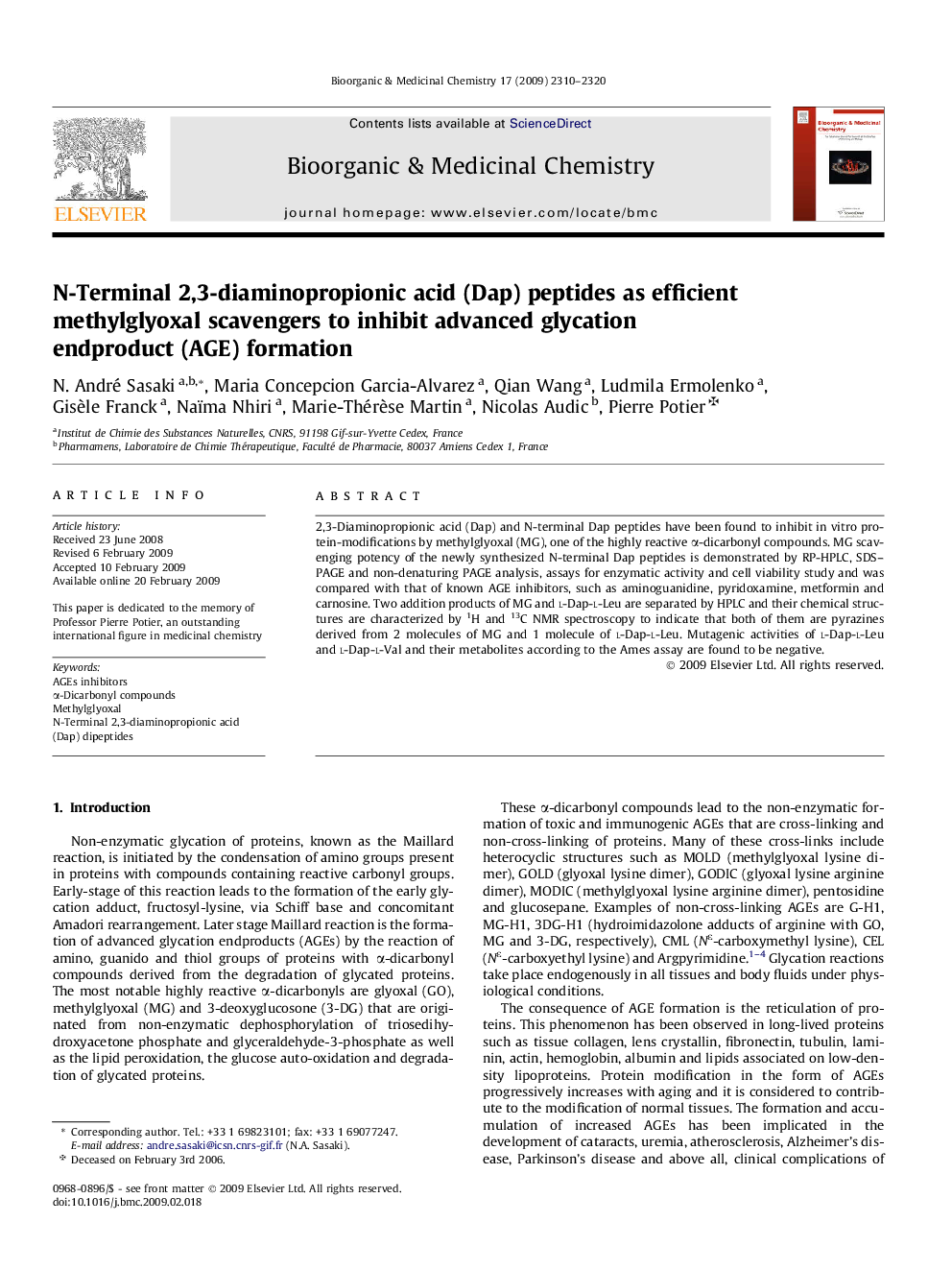| کد مقاله | کد نشریه | سال انتشار | مقاله انگلیسی | نسخه تمام متن |
|---|---|---|---|---|
| 1360045 | 981423 | 2009 | 11 صفحه PDF | دانلود رایگان |

2,3-Diaminopropionic acid (Dap) and N-terminal Dap peptides have been found to inhibit in vitro protein-modifications by methylglyoxal (MG), one of the highly reactive α-dicarbonyl compounds. MG scavenging potency of the newly synthesized N-terminal Dap peptides is demonstrated by RP-HPLC, SDS–PAGE and non-denaturing PAGE analysis, assays for enzymatic activity and cell viability study and was compared with that of known AGE inhibitors, such as aminoguanidine, pyridoxamine, metformin and carnosine. Two addition products of MG and l-Dap-l-Leu are separated by HPLC and their chemical structures are characterized by 1H and 13C NMR spectroscopy to indicate that both of them are pyrazines derived from 2 molecules of MG and 1 molecule of l-Dap-l-Leu. Mutagenic activities of l-Dap-l-Leu and l-Dap-l-Val and their metabolites according to the Ames assay are found to be negative.
N-Terminal Dap-containing dipeptides were evaluated as a new type of efficient α-dicarbonyl scavengers for the inhibition of AGEs.Figure optionsDownload as PowerPoint slide
Journal: Bioorganic & Medicinal Chemistry - Volume 17, Issue 6, 15 March 2009, Pages 2310–2320